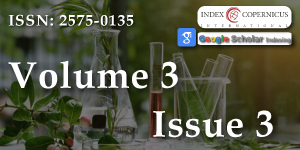Avermectins: The promising solution to control plant parasitic nematodes
Main Article Content
Abstract
Abamectin and emamectin are members of avermectin family which categorized as very effective but in the same time are toxic naturally. Most of products in this family are utilized as pharmaceuticals in both humans & animals and for crop protection. Despite avermectins are having complex chemical structures, but they are produced via synthesis in large scales for commercial use. Plant parasitic nematodes (PPNs) cause severe damages in all parts of their host plants, in addition to yield losses. The available strategies to control PPN include use of insecticides/nematicides but these have proved detrimental to environment and human health. Therefore, this scenario gave an opportunity for the utilization of avermectins (abamectin and emamectin) to control plant parasitic nematodes because of their chemical and biological properties, as well as relative safety. Avermectins have short half-lives and their residues can be eliminated easily through different food processing methods. Both abamectin and emamectin were very effective nematicides which proved capability of reducing PPNs significantly in various crops.
Article Details
Copyright (c) 2019 Khalil MS, et al.

This work is licensed under a Creative Commons Attribution 4.0 International License.
The Journal of Plant Science and Phytopathology is committed in making it easier for people to share and build upon the work of others while maintaining consistency with the rules of copyright. In order to use the Open Access paradigm to the maximum extent in true terms as free of charge online access along with usage right, we grant usage rights through the use of specific Creative Commons license.
License: Copyright © 2017 - 2025 |  Open Access by Journal of Plant Science and Phytopathology is licensed under a Creative Commons Attribution 4.0 International License. Based on a work at Heighten Science Publications Inc.
Open Access by Journal of Plant Science and Phytopathology is licensed under a Creative Commons Attribution 4.0 International License. Based on a work at Heighten Science Publications Inc.
With this license, the authors are allowed that after publishing with the journal, they can share their research by posting a free draft copy of their article to any repository or website.
Compliance 'CC BY' license helps in:
| Permission to read and download | ✓ |
| Permission to display in a repository | ✓ |
| Permission to translate | ✓ |
| Commercial uses of manuscript | ✓ |
'CC' stands for Creative Commons license. 'BY' symbolizes that users have provided attribution to the creator that the published manuscripts can be used or shared. This license allows for redistribution, commercial and non-commercial, as long as it is passed along unchanged and in whole, with credit to the author.
Please take in notification that Creative Commons user licenses are non-revocable. We recommend authors to check if their funding body requires a specific license.

